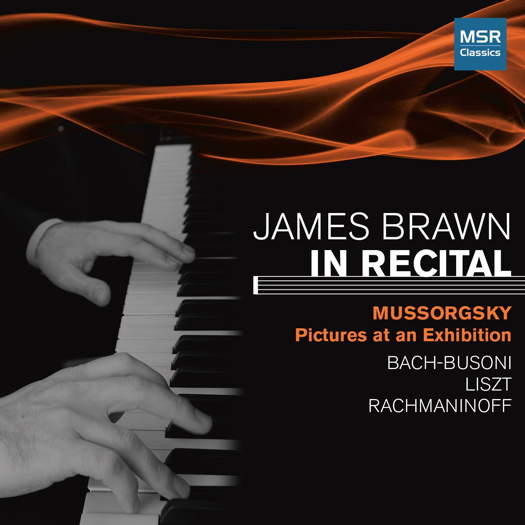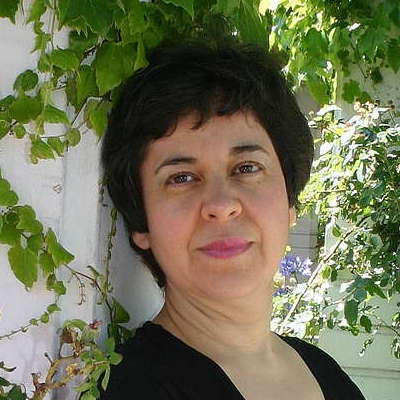 SPONSORED: A Seasoned Champion of New Music. Argentinian-American pianist Mirian Conti in conversation with Andrew Schartmann.
SPONSORED: A Seasoned Champion of New Music. Argentinian-American pianist Mirian Conti in conversation with Andrew Schartmann.
All sponsored features >>
Winter and Spring
GIUSEPPE PENNISI listens to orchestral music in Rome
Winter-Spring is the title with which this concert was presented, in which pieces by composers of different eras and styles are offered. At the third performance, in the early evening of 30 April 2022, perhaps due to the magnificent weather conditions in Rome and daylight saving time, the public did not run to the Sala Santa Cecilia (which can accommodate about three thousand listeners) of the Parco della Musica Auditorium.
Yet the program had its own rigor: three pieces respectively by a well-known contemporary composer, a composer of the twentieth century now rightly re-evaluated, and one of the best known composers of German Romanticism. Sakari Oramo is also an internationally renowned conductor, one of whose best-known recording achievements is the book of the complete Schumann symphonies with the Royal Stockholm Philharmonic Orchestra. Emmanuel Tjeknavorian is a young Austrian violinist, of Armenian descent, who goes for the most and plays a Stradivarius kindly provided to him by a London patron. A program, therefore, captivating.
Let's start with the second part – Schumann's first symphony. It is frequently proposed in the concerts of the Accademia Nazionale di Santa Cecilia and, therefore, the orchestra knows it very well. As mentioned, Sakari Oramo offered valuable readings in concert halls and CDs. On 30 April, the interpretation was punctual, precise, but almost soulless, except in the romantic abandonment of the second movement (larghetto). I had the impression that the conductor and orchestra had become so accustomed to this symphony, among the most difficult in Schumann's production, that they considered its performance almost routine. The sense of the routinier was transmitted to the audience which responded with almost courtesy applause.
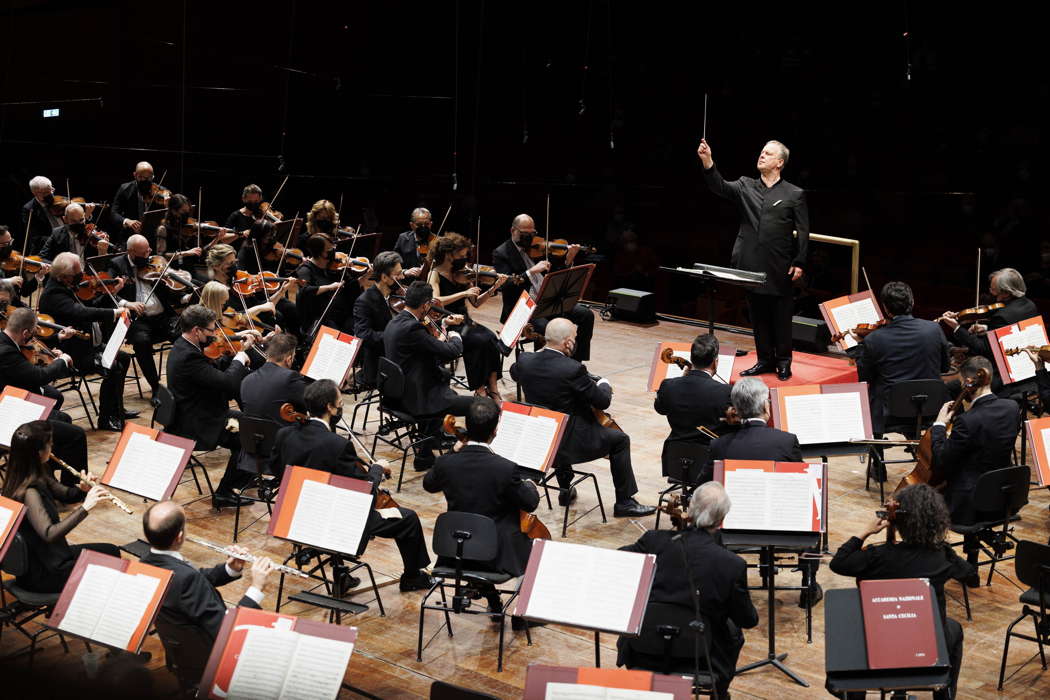
Sakari Oramo and the Orchestra dell'Accademia Nazionale di Santa Cecilia performing at the Auditorium Parco della Musica in Rome on 28 April 2022. Photo © 2022 Musacchio; Ianniello & Pasqualini
The two pieces of the first part had a very different reception. By Kaija Anneli Saariaho, Finnish but resident in France for decades, I only knew the opera L'amour de loin through a DVD and a selection at a concert by the Orchestra dell'Opera di Roma in collaboration with the Istituzione Universitaria dei Concerti IUC (conducted by Kazushi Ono) back in 2009. Ciel d'hiver, presented in Italian premiere, is a short composition (of twelve minutes) in which Saariaho reworks a longer orchestral work, dating back to 2002, entitled Orion. Mythology is intertwined with the seasons and with the imitation of nature. The flute with which the piece begins gravitates circularly on the harp and slides on the carpet of the strings. The winter sky becomes strongly sensual (as in various moments of L'amour de loin and with echoes of Debussy). Very far from the first works (of electronic and electroacoustic music) by Saariaho, who was a student of IRCAM. Sakari Oramo and the orchestra gave it an excellent reading full of nuances as recognized by the warm applause of the audience.
The Concerto No 2 for violin 'I Profeti' by Mario Castelnuovo-Tedesco is not, strictly speaking, a novelty in the concerts seasons of the Accademia Nazionale di Santa Cecilia. It was performed (with Bernardino Molinari on the podium and Jascha Heifetz on violin) in March 1934, a few years before the composer, a Sienese of Jewish origin, took the path of exile. He moved, like Erich Wolfgang Korngold, who was almost the same age, to Beverly Hills and, like the Austrian composer, wrote soundtracks (about two hundred) for Hollywood. Castelnuovo-Tedesco has been rediscovered more recently than Korngold, whose opera Die tote Stadt was repertoire already in the 1970s. Just scroll through the last months of CD journals to touch the vast record production by Castelnuovo-Tedesco's works of these years. I remember a superb performance of his Sonnets by Shakespeare in the Franciscan Museum of Montefalco in 2011 as part of the Sagra Musicale Umbra. (Read To the Glory of God in Music & Vision Magazine, 14 September 2011.)
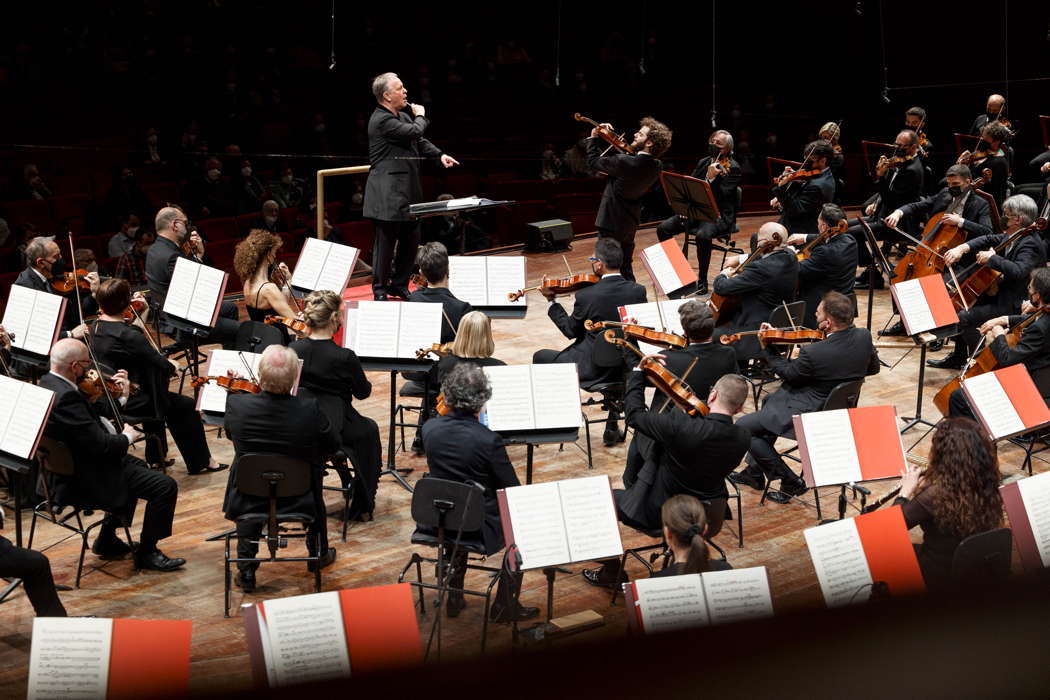
Emmanuel Tjeknavorian, Sakari Oramo and the Orchestra dell'Accademia Nazionale di Santa Cecilia at the Auditorium Parco della Musica in Rome on 28 April 2022. Photo © 2022 Musacchio; Ianniello & Pasqualini
I consider the Violin Concerto No 2 I Profeti to be 'program music' as it was fashionable in the first decades of the last century. The three movements (each of about ten minutes) are three dialogues between the violinist and the orchestra related to the themes characterizing three prophets: grave and meditative for Isaiah, expressive and painful for Jeremiah, proud and impetuous for Elijah. Oramo, Tjeknavorian and the orchestra gave an exciting reading. The short introductions for solo violin and the sustained and marked rhythm of the third and last movement were superb.
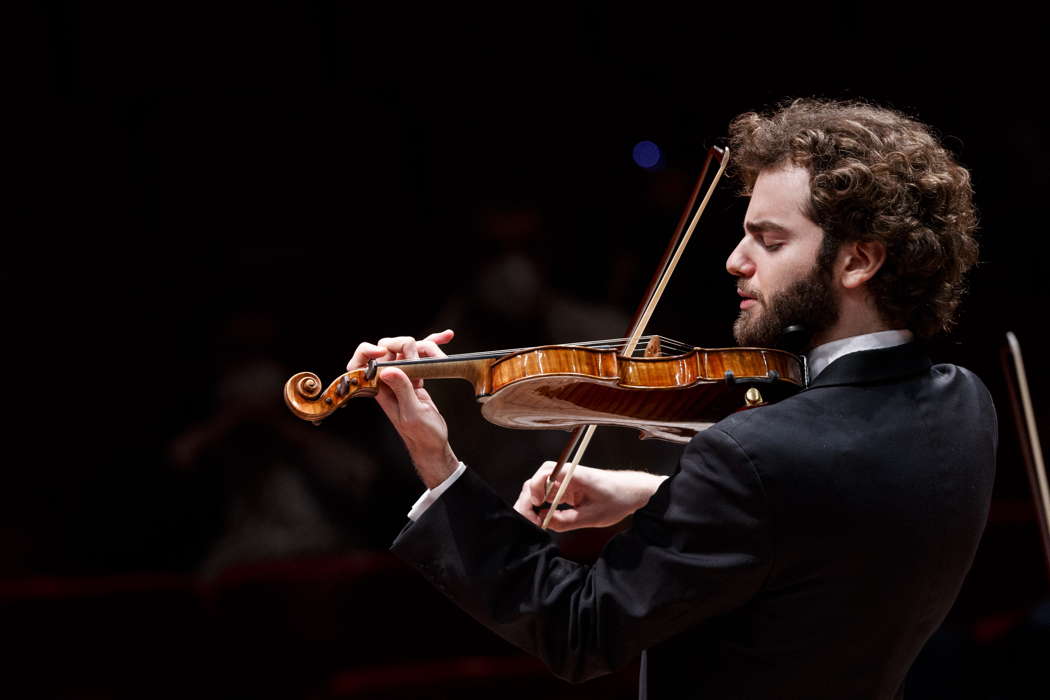
Emmanuel Tjeknavorian playing with the Orchestra dell'Accademia Nazionale di Santa Cecilia in Rome on 28 April 2022. Photo © 2022 Musacchio; Ianniello & Pasqualini
Enthusiastically, the audience asked for an encore to which Tjeknavorian responded with a violin transcription of a melancholic Armenian folk song.
Copyright © 2 May 2022
Giuseppe Pennisi,
Rome, Italy

ARTICLES ABOUT THE ACCADEMIA NAZIONALE DI SANTA CECILIA


